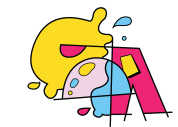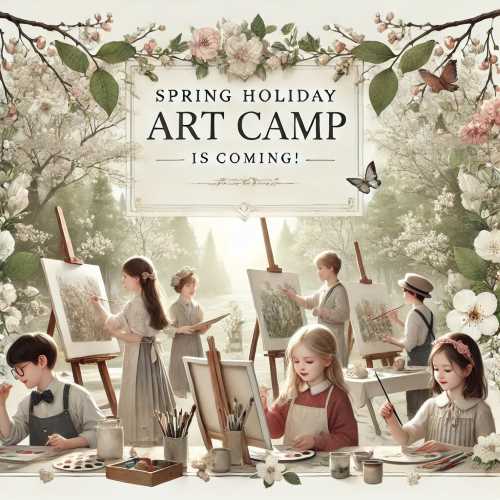
In art depth is what makes things look like they are either close to you or far away, creating a sense of space. When a painting has depth, it feels more alive and realistic, but how can you create this effect? Don’t worry—it’s easier than you think! In this guide, we’ll explore simple techniques to create a sense of depth in any painting.
Learning how to create depth is an important part of improving your artwork, and it can be a lot of fun. Many kids in a painting class for kids love to experiment with new techniques, and adding depth is one of the most exciting steps.
In fact, creating depth is one of the skills taught in top kids’ creative drawing classes. Once you learn how to make things look far away or up close, your drawings and paintings will look more interesting and realistic. Let’s dive into the key ways by which you can make your artwork look more three-dimensional!
1. Making Things Look Close or Far Away
To make a painting look like it has depth, one of the most effective techniques is using perspective. Perspective helps show how some objects are closer to you and others are farther away. There are two common types of perspective: one-point and two-point perspective.
In a one-point perspective, all the parallel lines in the painting lead to a single vanishing point on the horizon, making objects appear to shrink as they move farther away. For example, if you’re painting a train, the train cars that are closest to you look larger, while the cars in the distance get smaller and eventually disappear into the vanishing point.
In a two-point perspective, there are two vanishing points, typically placed on opposite sides of the composition. This is useful when you’re drawing buildings or objects from an angle. Each side of the object will appear to recede toward one of the two vanishing points, making the drawing feel more dynamic and realistic.
Another great way to add depth is by using overlapping. If you draw one object in front of another, like a car in front of a house, the car blocks part of the house, indicating that the car is closer. This simple technique adds space and dimension to your painting.
2. Shadows and Light
Tonal value refers to how light or dark something is. Every object you paint has a variety of tones, from light highlights to dark shadows. If you want to make your painting look three-dimensional, you have to pay attention to these light and dark areas. For example, let’s say you’re painting a blue pitcher. Even though the pitcher is blue, it will have areas that are almost white where the light shines on it, and areas that are very dark, almost black, in the shadows.
To practice this, take any object and place it near a light source, like a window. Look closely at how the light hits one side, making it bright, while the other side is in shadow. You’ll notice that even a white flower has many different colours in its shadows—maybe pinks, grays, or blues. When you include these shades in your painting, it makes the object look round and real. A great kids’ creative drawing class will help young artists practice seeing these colours and tones in everyday objects.
Many new artists make their light areas bright enough but forget to make the shadows dark enough. Without dark shadows, the objects in a painting can look flat.
3. Adding Details
Another way to create depth in your painting is by controlling the level of detail. Think of a photograph where the object closest to the camera is sharp and clear, but things far away are blurry. Your painting should work the same way. Focus on adding more detail to the objects in the front and making the background softer and less detailed. This is a trick that makes the viewer’s eyes understand that some things are near, and some things are far.
For example, if you’re painting a landscape, you might want to draw the trees, flowers, and grass in the foreground with lots of details, like leaves and petals. As you move toward the background, the trees can be painted with just general shapes and colors. This is a simple way to create depth and make your painting look more realistic.
Wrapping Up
Creating depth in a painting might seem tricky at first, but with a little practice, it becomes easier and more fun. By using perspective, you can show that some objects are close and others are far away. The vanishing point and size changes help your art look like it has real space.
Adding tonal value by paying attention to light and shadow makes your objects look round and three-dimensional. And finally, controlling the amount of detail based on how close or far something is will give your painting that realistic depth. In kids’ creative drawing classes, these skills are often introduced early on to help young artists develop their abilities. Whether you’re painting a train, a landscape, or a favourite animal, understanding depth will make your artwork more interesting and impressive.



